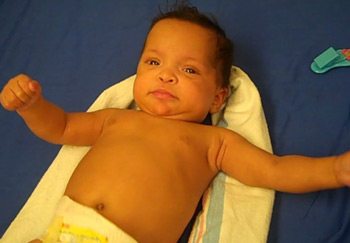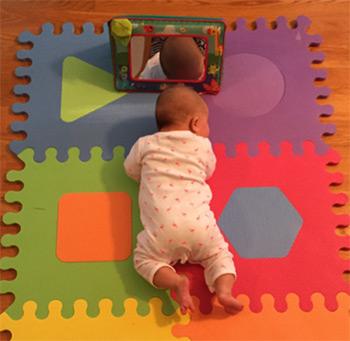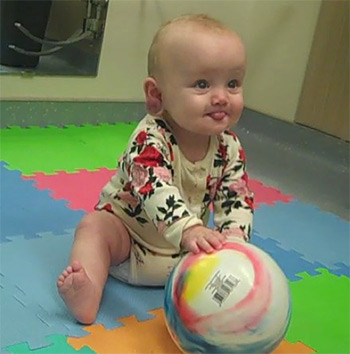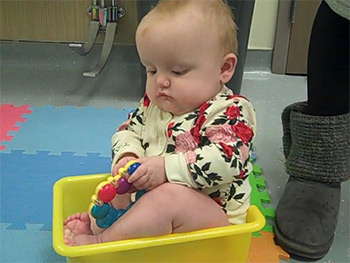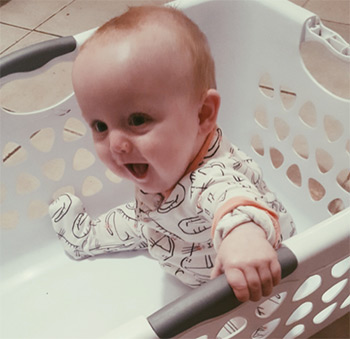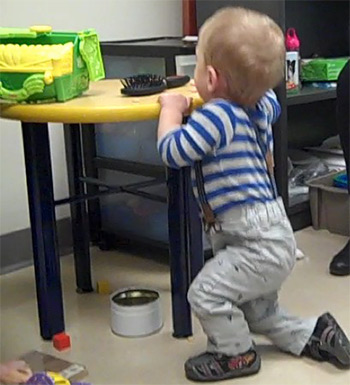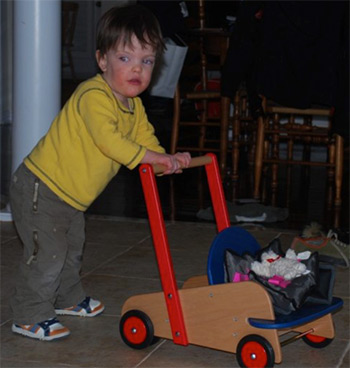We also want to work on your baby’s eye contact and the beginnings of a smile! With every opportunity you want to encourage eye to eye contact which is different than following a toy or object around the room. Eye contact with a loved one is the beginnings of language and learning. With time you want to encourage longer and longer eye contact. Your face is the best toy!
In addition, you want to ensure that your baby can look to the Right and to the Left equally.
3rd Month Corrected:
Onward you go!
At this point, your baby is probably staying awake for longer periods. Therefore, there are more opportunities for Tummy Time!!!
As a goal, we would recommend that for every ½ hour that your baby has been awake, he or she should be doing a couple of minutes of tummy time to build their tolerance. For some parents, this is done with every diaper change as that is a great opportunity for your baby to have some time on his or her tummy. A BIG ‘Tummy Time’ Tip – make sure they are putting weight through their forearms by having his or her arms out in front of his or her shoulders.
4th Month Corrected:
Your baby is increasingly curious which is great. It can now be a great opportunity for a seat on the floor, to allow them to be upright and supported, safely. Always put the seat on floor for safety! There are many different models and many can be bought at second hand stores or passed down from a friend or family member. We have posted one photo as an example of the support we would want for your baby at this stage, with the higher back and sides so that your baby is nestled into the seat. You can put a tray or box in front to allow him or her the chance to play with toys while they sit. This is a type of ‘Tummy Time’ sitting up.
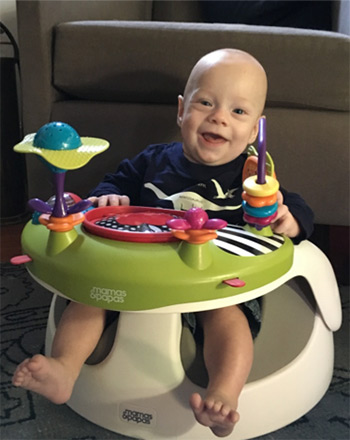
We still also want lots of time on his or her tummy! We can add new challenges with starting to promote pivoting on your baby’s tummy. This can be done by placing a toy at each side (sort of off of his or her shoulder rather than right in front of his or her face) to encourage your baby to look from side to side and eventually reach for the toy and start to move!
5th Month Corrected:
Lots of more exciting changes are greeting you every day. As your baby approaches his or her fifth month, he or she may be seeming more and more interested in what you are eating. In order to introduce solid foods, we recommend that you put your baby in a high chair with slight recline so that they have good support while they are learning to eat. We recommend that you start your baby with pureed or soft food and that you start with smooth textures, not lumpy. For babies that have been in the NICU, and have often had lots of things put into their mouths while there, the babies can develop sensitivity or an increased awareness of the mouth. By keeping the food smooth, it may be easier for your baby to expect and learn to feed. In order to know if your baby has a reaction or allergy to a certain food, we recommend offering a new food every 3 to 4 days to allow time to check. There is no special order that you have to follow to offer your baby solid foods. Some parents start with vegetables or fruits, others with cereal or meat. It is important to know that protein (which comes in the form of meat, beans, lentils) and fat (avocado, yogurt, butter, margarine, olive oil) are important for growth and brain development and should be included as you advance or offer more and more foods.
Certain foods are not recommended early, including peanut butter, eggs, and dairy as they can be associated with allergies that can be significant. These foods can be introduced as your baby becomes a bit more comfortable with solids, closer to the second half of his or her first year.
And remember, messy is learning!

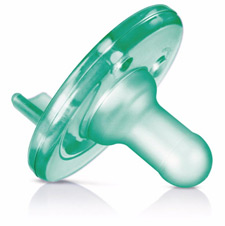 Midline head
Midline head 